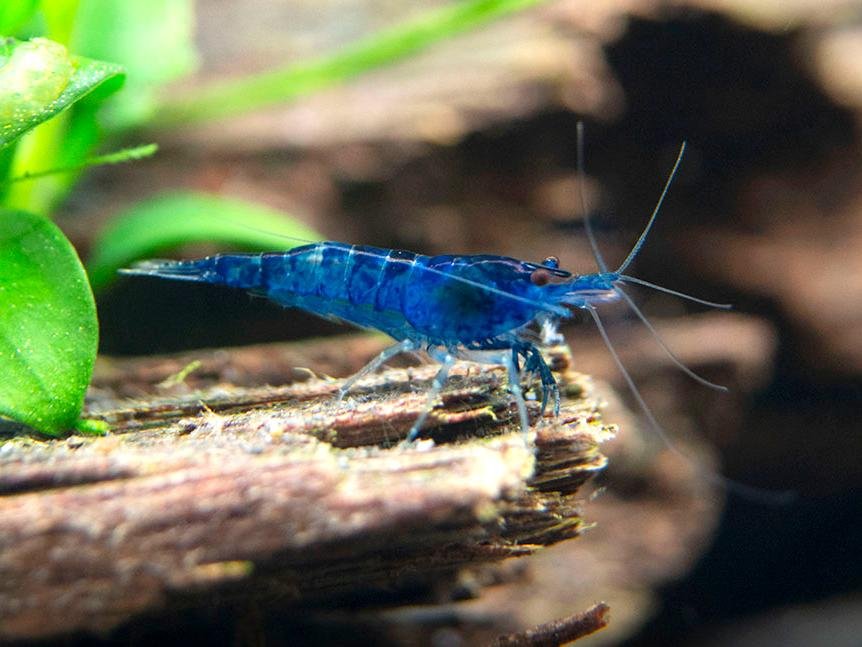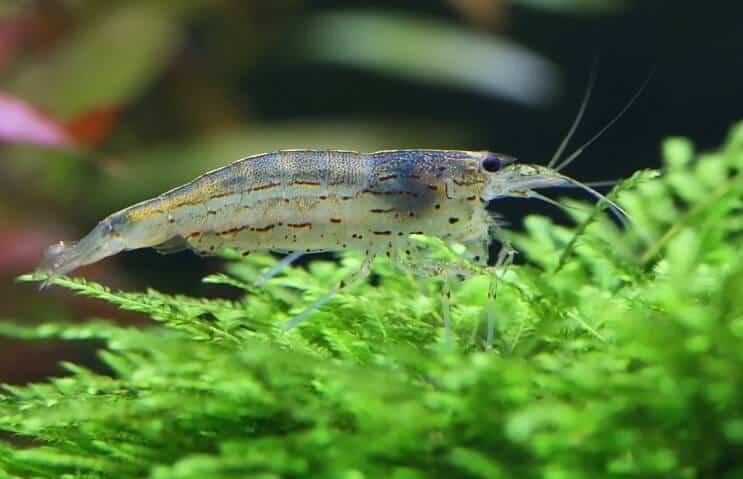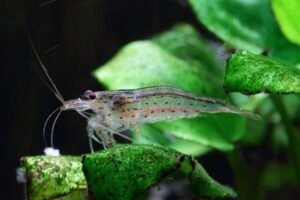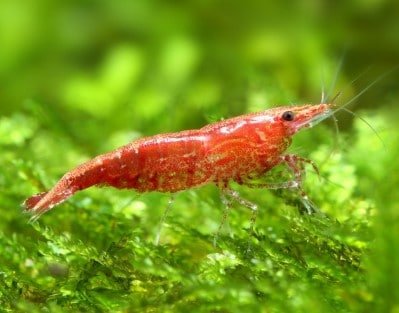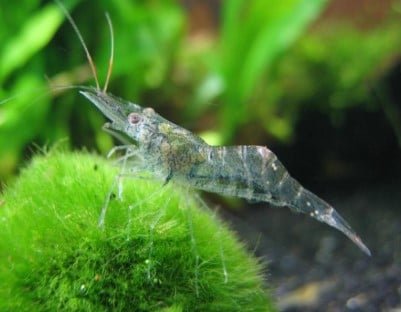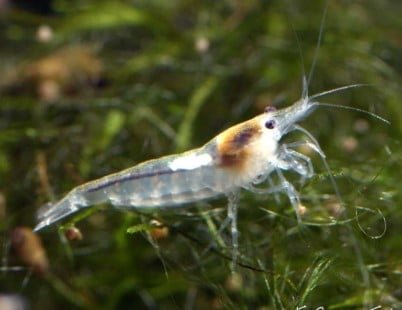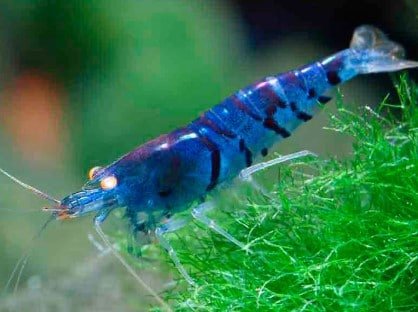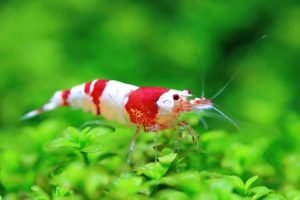Selecting the best shrimp for betta tank environments requires careful consideration of shrimp size and temperament. In this article we have done the research on the best shrimp for betta tank ecosystems, helping you prevent potential conflicts and ensure a harmonious environment.
Betta fish are popular as they are both colorful and really beautiful to watch. They love living in a large tank with plenty of space for them to swim and several hiding places behind live plants too.
The ideal water temperature for Betta fish is 24°- 28°C (76°-82°F). Bettas love living in clean water conditions and also prefer soft water with pH7.
The Betta is also known as the Siamese Fighter Fish as it does have a reputation of being an aggressive fish – especially the males – and new owners often wonder it is wise to put their betta with other fish or whether there is a best shrimp for betta tank.
If you are planning to introduce some mates for your betta into his tank, it is best to do some good research first.
Best Shrimp for Betta Tank Cohabitation

Compatibility and Benefits
Bettas are territorial and can be aggressive. So there is no point trying to introduce any species of small shrimps into the tank as they will simply be eaten or injured.
The best type of shrimps to introduce into your betta’s tank are the large freshwater species. The shrimp should be about the same length of your beta if there is going to be a chance of them living in harmony.
The minimum length for your shrimps is 5cm (2 inches).
Shrimps can be really good tank mates for betta fish. Shrimps literally eat anything – including algae- so they will help keep the tank water in pristine condition – just as your betta likes it!
Although your betta fish will dominate the fish tank because of their good looks, having some shrimp in the tank definitely adds interest and fun.
Should you decide that you would like to encourage your shrimps to spawn, their young offspring make a really nutritious meal for your betta too.
Best Shrimp for Betta Tanks [Our Top Picks]
Cherry Shrimp

There are a number of different cherry shrimps but it is the red cherry shrimp that is the hardiest of them all which is why this shrimp is compatible with Bettas.
- Live Arrival Guarantee.
Prices pulled from the Amazon Product Advertising API on:
Product prices and availability are accurate as of the date/time indicated and are subject to change. Any price and availability information displayed on [relevant Amazon Site(s), as applicable] at the time of purchase will apply to the purchase of this product.
Characteristics and appearance:
As its name implies, the red cherry shrimp is a lovely dark red color which will certainly add extra color to your tank. Having said that, because of its color, this shrimp is easier for your betta to spot – if he is feeling aggressive.
Your Betta will eat your shrimps, so it is important that you buy large ones and also ensure that your tank offers them plenty of hiding places. Female red cherry shrimps are usually larger in size than males and a stronger color.
Compatibility with bettas:
Red cherry shrimps can live well alongside bettas because they are no trouble at all but will quietly spend their time scavenging which will keep the tank clean.
Care requirements:
Red cherry shrimps are easy to care for as they enjoy the same range of water temperature as your Betta. Their normal lifespan is 2-3 years and in a ten-gallon tank with one betta you can keep up to six red cherry shrimps.
Amano Shrimp

Characteristics and appearance:
The amano shrimp originates in Japan. They are peaceful and easy to care for making them a good tank mate for bettas.
They are usually a light brown color but can be translucent. The great thing about having these shrimps in your tank is that they love cleaning!
Amano will keep the tank completely clear of algae at all times.
- Live Arrival Guarantee. Please message us if any issues.
Prices pulled from the Amazon Product Advertising API on:
Product prices and availability are accurate as of the date/time indicated and are subject to change. Any price and availability information displayed on [relevant Amazon Site(s), as applicable] at the time of purchase will apply to the purchase of this product.
Compatibility with bettas:
An aggressive betta will eat an amano shrimp. So, it is really important to ensure that there is plenty of space in the tank and to provide lots of hiding places for the shrimps as this shrimp loves to hide in dense vegetation.
Amanos moult every month and when this happens, they feel very vulnerable and will disappear from view, hiding in the weed for several days.
A maximum of six shrimps in a ten-gallon tank with one betta is recommended.
Care requirements:
Amano really are lovely shrimps that take minimal care, but their diet of algae can need nutritional supplements such as shrimp pellets, zucchini, or algae wafers several times a week. The only big problem with Amano is that they are not always easy to buy.
Ghost Shrimp

Characteristics and appearance:
Ghost shrimps are a great choice for your betta tank because they are just so easy to care for. They are really clever at hiding which is a real advantage if your betta is in a stroppy mood. Having said that, your ghost shrimps won’t trouble your betta.
Ghost shrimps tend to be loners and only interact with their own species. There are two different types of ghost shrimp Palaemonetes Paludosus and Macrobrachium Lanchesteri.
The first type is gentle and the best one to put in a tank with betta.
- Freshwater Ghost Shrimp are excellent scavengers that help keep aquariums clean.
Prices pulled from the Amazon Product Advertising API on:
Product prices and availability are accurate as of the date/time indicated and are subject to change. Any price and availability information displayed on [relevant Amazon Site(s), as applicable] at the time of purchase will apply to the purchase of this product.
Compatibility with bettas:
Ghost shrimps are the best type of freshwater shrimps to choose to live with your betta. They are transparent shrimps that are sometimes referred to as ‘glass shrimps’.
This is a good advantage as it makes it difficult for bettas to spot them! Ghost shrimps are very common, are cheap to buy and breed really easily which will bring the benefit of highly nutritious food for your betta.
Care requirements:
These shrimps happily live for 12-18 months. They are a more delicate type of shrimp and are easily affected by poor water conditions– the chemicals in the tank water can kill them.
They like the water temperature to be the same as Bettas and also like a pH of 7.
Ghost shrimps are excellent scavengers, and you may well see them swimming on the bottom of the tank checking the stones for anything edible!
The recommended number for a 10 gallon tank is 2-4 ghost shrimps.
Tips for Introducing Shrimp to a Betta Tank
 Before you add shrimps to your beta tank, it is worth thinking about your plans. If you feel that your betta is an aggressive fish, you must appreciate the fact that your shrimps may not last too long as bettas will try and eat shrimps.
Before you add shrimps to your beta tank, it is worth thinking about your plans. If you feel that your betta is an aggressive fish, you must appreciate the fact that your shrimps may not last too long as bettas will try and eat shrimps.
If you have a beautiful long-finned betta, your shrimps will stand a good chance of survival as this type of betta tends to swim more slowly so the shrimps will be able to swim faster to get away!
To successfully introduce shrimps into your fish tank with your betta, it is best to move your betta temporarily to another tank.
Clean the main tank and move some of the plants and ornaments to different positions ensuring there are plenty of hiding spots for your shrimps and spots of interest for your betta too. Allow plenty of room for them to swim around.
Introduce the shrimps to their new home and after about 48 hours, your betta. Your betta will think that he is in a new tank and may not consider the shrimps as intruders. Careful observation will be required as this trick doesn’t always work!
It is important to continue monitoring your fish tank well. Ensure that the water temperature and chemical balance are both good and that both your betta and shrimps have plenty to eat.
Additional considerations for best shrimp for betta tank
 The set up of your aquarium is key to success and the key requirement is that it is large enough – ten gallons is the minimum size required.
The set up of your aquarium is key to success and the key requirement is that it is large enough – ten gallons is the minimum size required.
As mentioned, your betta needs the water to be in the temperature range of 24°- 28°C (76°-82°F) with a pH of 7. These requirements will suit the shrimps too.
The shrimps need numerous good hiding places, and your beta will enjoy having places with numerous plants to explore as he will easily get bored.
Smooth ornaments that cannot hurt your betta or shrimps will add interest too.
It is important to keep your beta well-fed because if he is hungry, he will consider eating on of your shrimps. Check that the fish food you give him contains exoskeleton fiber content.
This is the nutrient betta get from eating shrimp – if you keep your betta supplied with this, he will not be tempted to try and eat one of your shrimps as an extra course.
Ensure that you understand the dietary requirements of both your betta and shrimps so that they are both really healthy and content as this will minimize any aggression from your betta.
Final thoughts – best shrimp for betta tank
Adding some Amano, Cherry Shrimp or Ghost Shrimps to your tank will definitely provide you with added interest with the added advantage that your tank will be kept well-cleaned – just as your betta likes it! These three species are our top picks for the best shrimp for betta tank.
Following our guidelines, you will be able to create an attractive tank filled with live plants, your beautiful betta and some shrimps to keep him company.
..

![Introducing Best Shrimp For Betta Tank [Top 3] best shrimp for betta tank](https://aquariumhunter.com/wp-content/uploads/2023/11/best-shrimp-for-a-betta-fish-tank-500x300.jpg)



![[Detailed Answer] How Many Cherry Shrimp Per Gallon? How Many Cherry Shrimp Per Gallon](https://aquariumhunter.com/wp-content/uploads/2022/01/cherry-shrimp-feeding.jpg)



